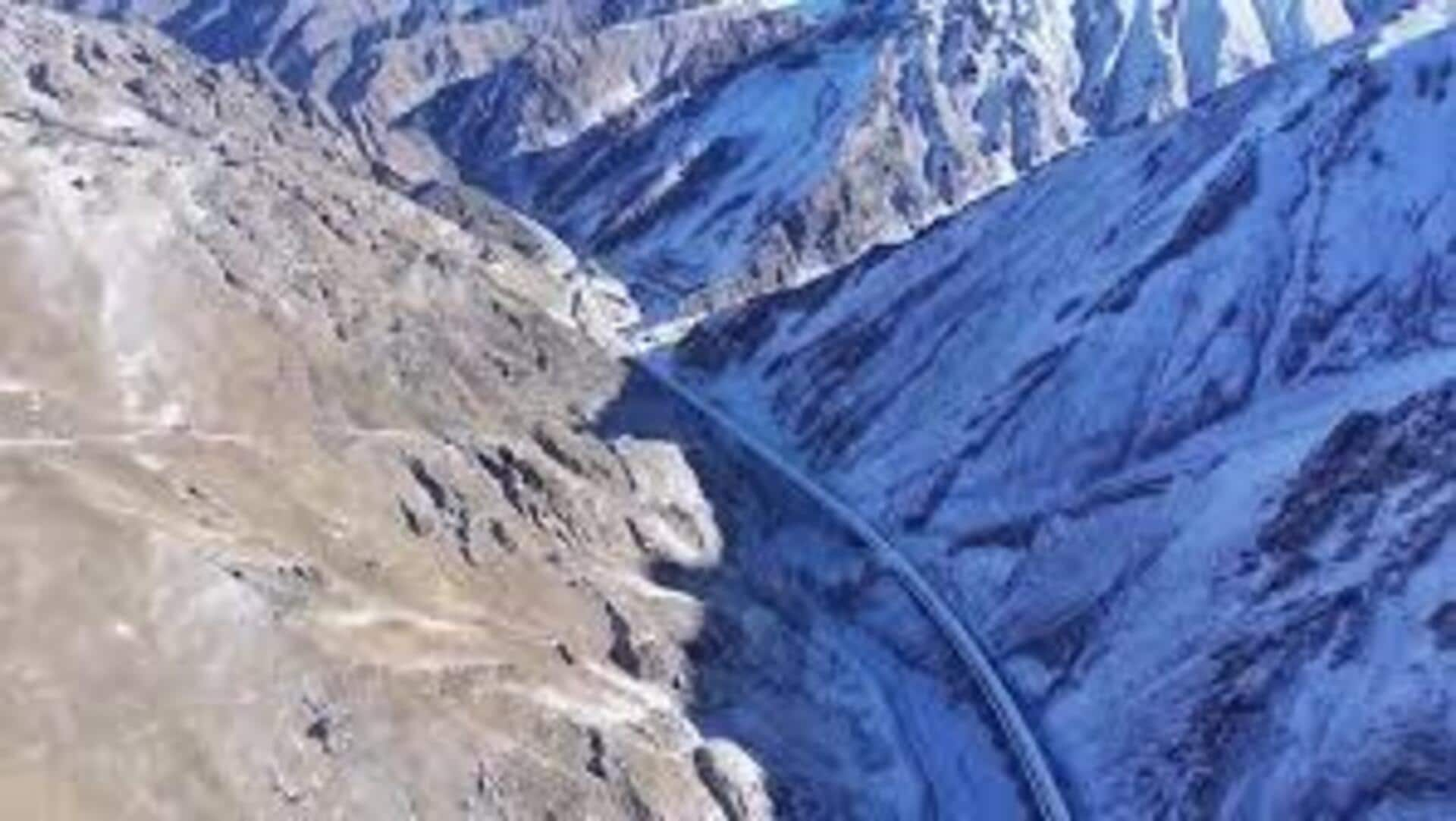China completes world's longest expressway tunnel in Xinjiang: Key highlights
What's the story
China has finished building the Tianshan Shengli Tunnel in the Xinjiang Uighur Autonomous Region, which is now the world's longest expressway tunnel.
The 22.13km long tunnel will reportedly cut down travel time through the Tianshan Mountains from three hours to about 20 minutes.
The major infrastructure project will improve connectivity between northern and southern Xinjiang, possibly increasing access to Eurasian countries under China's Silk Road Economic Belt initiative.
Strategic importance
Tunnel's strategic role in Urumqi-Yuli Expressway
The Tianshan Shengli Tunnel is a vital part of the 319.72km Urumqi-Yuli Expressway.
Once opened in 2025, the expressway will cut down the driving time between Urumqi and Yuli County from seven hours to a little over three hours.
Construction of the tunnel started in April 2020 and encountered several challenges due to high-altitude construction of over 3,000 meters and complex geological conditions.
Sustainable innovation
Ecological considerations and technological breakthroughs in construction
The tunnel's construction had to follow strict high ecological protection standards as it is located near the Tianshan No. 1 Glacier and Urumqi's water source.
The project was a major technological breakthrough as it was the first time a tunnel boring machine was used for road construction in China.
This innovative approach cut down typical construction time from 10 years to just over four, showcasing China's commitment to rapid infrastructure development while maintaining environmental sustainability.
Design and labor
Tunnel design and worker challenges
The Tianshan Shengli Tunnel is a dual-directional, four-lane tunnel with a speed limit of 100km/h. It lies over 3,000 meters above sea level in the remote Tianshan Mountains.
More than 3,000 workers were involved in the construction process, working under harsh conditions with low oxygen levels and geological challenges such as rock bursts and collapse.
Despite the severity, the tunnel was completed in just 52 months—much faster than the usual 72 months with conventional methods.
